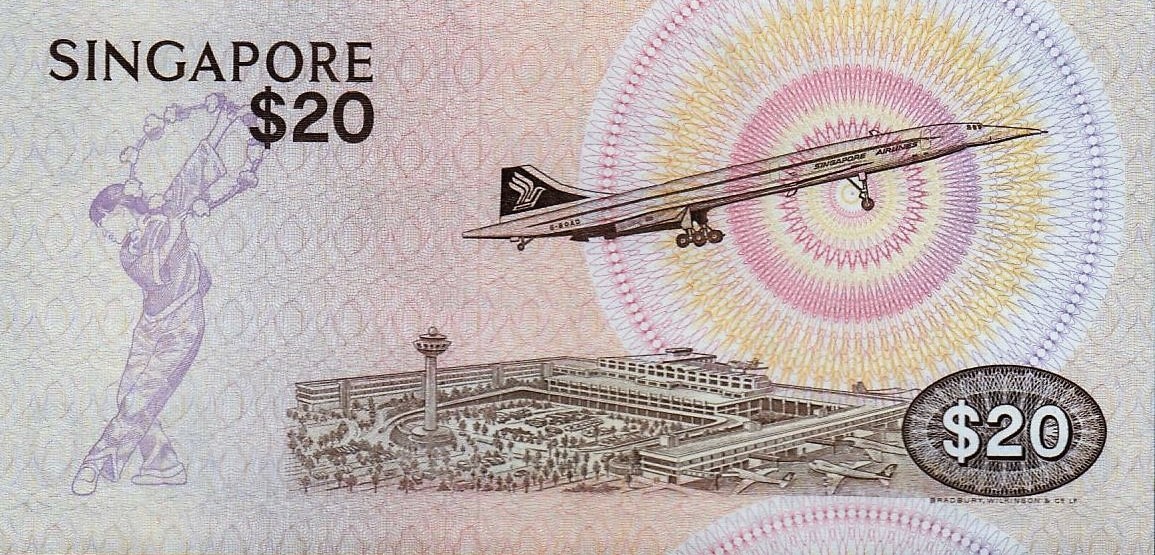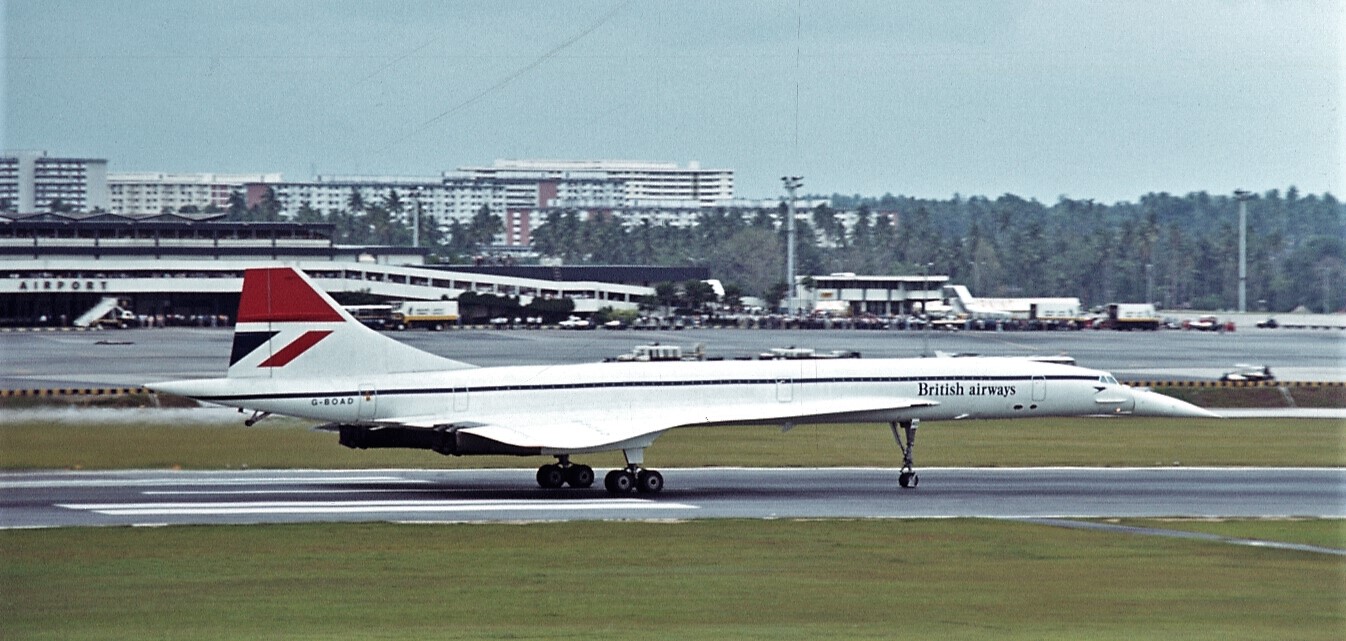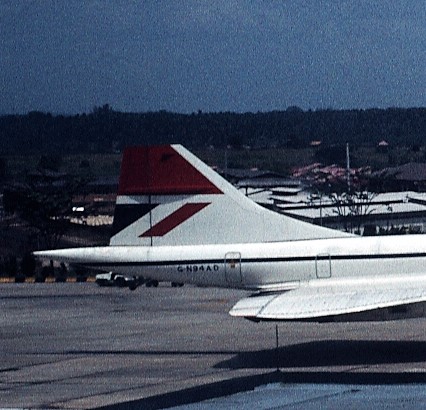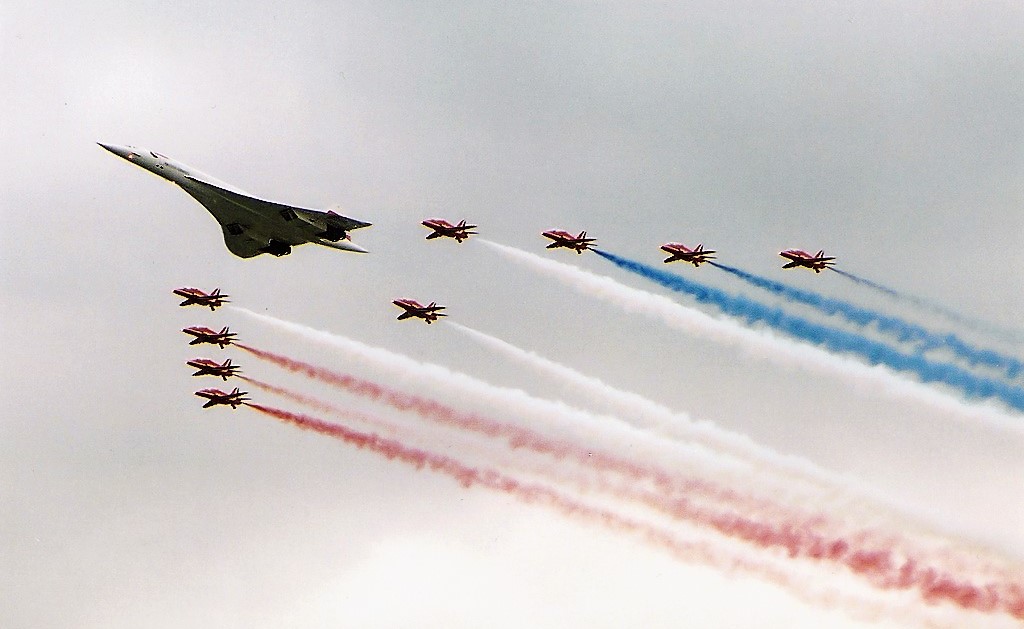Aviation and the Banknote (Part 1) - The Concorde

Even though I started collecting banknotes at a fairly young age, once I started my flying career, the obvious overlap made me particularly interested in the theme of aviation on banknotes. It is a very small corner of the vast hobby of banknote collecting (and my collection is in no way limited to this theme) but there are some interesting aviation references on banknotes from around the world. I start my series on Aviation and the Banknote with a note featuring the iconic Concorde!

If one looks closely at the words written just below the tail on the lower part of the body of the aircraft the letters G-BOAD are visible.

This is the registration of the aircraft and G is a prefix used for aircraft registered in the United Kingdom. Singapore Airlines never actually owned any Concorde aircraft. Aircraft G-BOAD first flew on the 25th of August 1976. In October of 1977 Singapore Airlines announced an agreement had been made with British Airways (BA) for a scheduled flight from London to Singapore, via Bahrain, bringing the travel time down from around 17 hours to 7-8 hours. G-BOAD was painted in the Singapore Airlines’ livery on its left side, while BA's was painted on the right side.


The actual operation of the flight began in December of 1977 and it was scheduled to operate 3 return services a week. The London-Bahrain sector was operated by a BA cabin crew and then a Singapore Airlines cabin crew took over for the Bahrain-Singapore sector. The service had to be suspended after only 3 return flights in December 1977 as permission to overfly the Straits of Malacca was withdrawn by the Malaysian Government because of complaints about the supersonic boom. Though there were no flights to Singapore the livery was kept and the aircraft was operated on other routes including to the United States. BA implemented a scheme with Braniff International. Once BA had completed the scheduled flight from London to Washington, the aircraft was leased to Braniff. It was then transferred to the US register operated by US nationals employed by Braniff. The flight crew were monitored by BA flight crew and the aircraft flew the Washington-Dallas-Washington sector. On these two sectors, the aircraft's US legal paperwork was kept on the flight deck while the British legal paperwork was temporarily stored in the toilet. To make this complex arrangement work and to meet the restrictive airline regulations of both the UK and US, each Concorde in the BA fleet was reregistered. G-BOAD was reregistered G-N94AD. Once back in Washington the aircraft registration patch with the US markings was removed, the British legal documentation retrieved from the toilet and the aircraft was placed back on the British register ready for the BA flight to London.


In January 1979, the London-Bahrain-Singapore service was resumed with new routings avoiding the Malaysian state of Johor, however only at subsonic speeds. The service was ended in November 1980 because of losses on the route, low loads on the Singapore-London sector and higher operating costs at subsonic speeds. G-BOAD continued to operate on other BA routes, going on to set the fastest Atlantic crossing by any commercial aircraft in February 1996, taking off from New York JFK and landing in London Heathrow 2 hours, 52 minutes, and 59 seconds later. The plane covered the 6,035 km (3,750 miles) at an astonishing average speed of 2,010 km/h (1,250 mph). It is also considered to be one of the most photographed Concordes as it took part in the Queen’s Golden Jubilee flypast in June 2002 where it was viewed and photographed by more than just aviation enthusiasts.

The aircraft performed its final flight in November 2003 and ended up being the most flown Concorde, clocking up a total of 23,397 hours. After landing in New York from London on its last flight, it was transferred on a barge, sans engines, to the Intrepid Sea-Air-Space museum.
In December 2006, this Concorde was moved to Floyd Bennett Field in Brooklyn, where it was housed in poor conditions. Eventually in October 2008 the aircraft was moved back to the Sea-Air-Space museum on board USS Intrepid in Manhattan (and placed on the pier, rather than on a barge!). It is still there today and is certainly worth a visit.
What a celebrated aircraft to feature on a banknote! One last note about G-BOAD: the Singapore Airlines paint scheme was only on the left side of the actual aircraft, however the picture on the banknote seems to show the paint scheme on the right side of the aircraft (technically an incorrect representation!). This might have something to do with reversing images during the printing process or just the fact that the designers of the note wanted the aircraft to be facing towards the right. Either way, this is an interesting note to add to one’s collection, the front imagery is part of the Singapore ‘bird’ series featuring the yellow-breasted sunbird.





